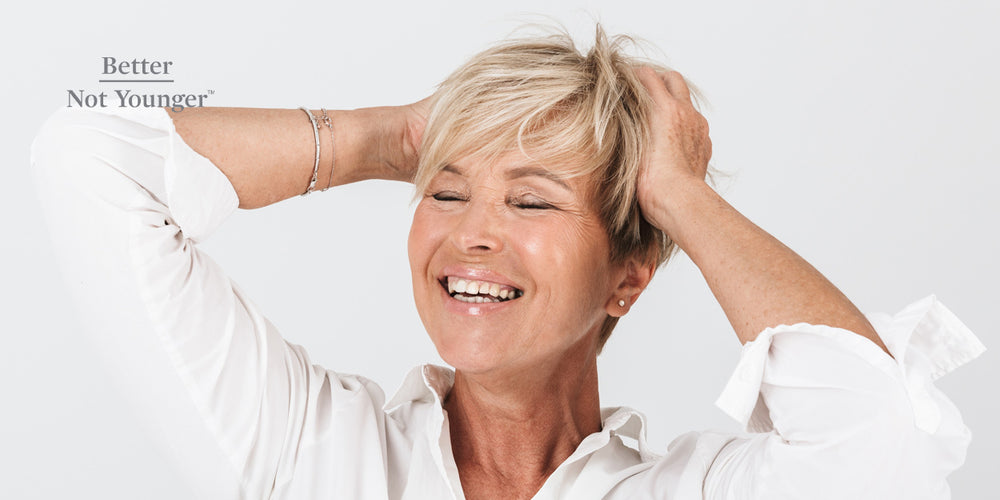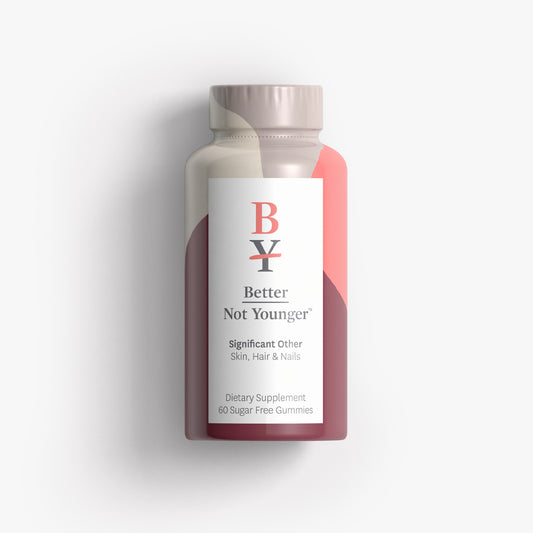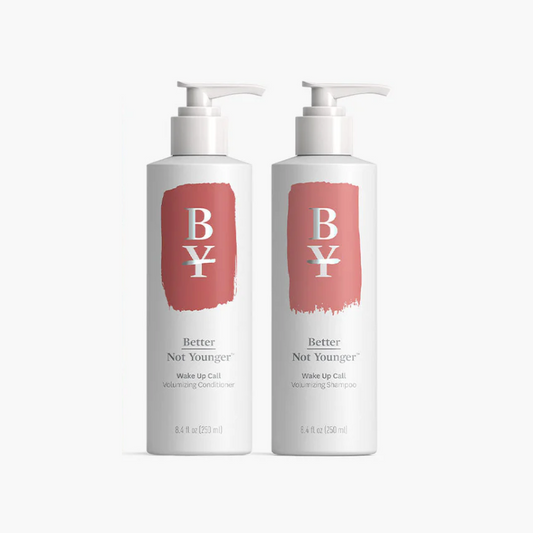What Does New Hair Growth Look Like?

While daily hair loss is normal, sometimes hair loss in women results from menopause or pregnancy or even other factors like stress. But just like hair loss in women is common—though frustrating—hair growth for women is generally on the other side of that hair loss.
New hair growth almost always happens on your head, especially if you have healthy hair follicles. Signs of new hair growth are to be celebrated (though there is nothing wrong with or shameful about thinning hair on women!). To understand new hair growth, we must also discuss hair loss, the growth cycle, and signs that your hair is growing back.
Stages of Hair Growth
Before we can look deeper into new hair growth for women and signs your hair is growing back after hair loss, let’s consider the whole process a strand of hair goes through from beginning to end. This is the hair growth cycle:
Phase 1: Anagen
The first stage of hair growth is the anagen phase, which lasts longer than any other phase. Hair can grow in the anagen phase for years. Typically, hair is in this phase for upwards of two years but can go as long as six, growing about 1 centimeter to 1 inch per month. During this growth phase, the hair follicle grows a new shaft for the hair. You already know your hair is constantly growing, so your strands are almost always in the anagen phase of hair growth.
Phase 2: Catagen
The next stage of growth is the catagen stage. This phase of hair growth is pretty quick—anywhere from a week to three weeks. This is what is called the transition stage, and it’s the phase your hair is in between growth and rest. Your hair strands are literally slowing to a stop in growth, and the follicle shrinks.
Phase 3: Telogen
The penultimate phase of the hair growth cycle is the telogen phase when the hair rests. Not much hair on your head is in this phase at any given time because it’s short. While most hair is in the anagen phase, about 6% is in the telogen phase (compared to 3% in the catagen phase, the shortest of all). Your hair stays in this state for a couple of months before reaching the last stage of the cycle.
Phase 4: Exogen
The exogen phase of hair is when the hair falls out. Hair loss is normal, and your hair has to fall out so new hair can come in. Normal hair loss is up to 150 strands every single day. When these hairs fall out, the anagen phase begins again in the same follicle from which the hair just came.
Signs Your Hair Is Growing Back
Whether you’ve experienced hair loss because of menopause, pregnancy, stress, or any other reason, there are signs you can watch out for that thinning hair is recovering.
One of the first signs your hair is growing back? You might notice dark spots on your scalp. These dark spots on your scalp are especially common if you have dark hair because these dark patches are the hair follicles getting ready to produce a strand of hair.
You’ll also most likely see baby hairs on your hairline as a sign your hair is growing back. These very fine baby hairs on your hairline can be soft and delicate and are the beginning signs of regrowth coming in. Being gentle with these little hairs is important because they’re fine and fresh. They’re a positive sign of what’s to come with growth.
Another sign of new hair growth is that your hair may start coming back in as what we call peach fuzz. This is common in places where you might have experienced trauma that damaged the hair follicles—like with surgery. The peach fuzz is often spiky when it comes in and can be coarse, but the good news is that it means your hair follicles are in working order!
How to Take Care of New Hair Growth
When your new hair starts to come in, it’s important to take care of it to keep it healthy and to encourage it to continue to grow. One way to do this is by using our Significant Other Hair, Skin & Nails Supplement + Retinol Boost. This supplement provides an all-around boost to your body, from your hair to your skin and nails. For your hair specifically, it’s made with folic acid and vitamin A to nurture your roots so new hair can grow.
You can also use our Power Within Skin & Scalp Collagen Gummies, which fight follicle damage and maintain hair elasticity and hydration. All of this combines to keep your fragile new hair growing on the right track.
Also super important is to support scalp health with our hair and scalp serum designed for thinning hair on women over 40 whose strands need some extra love. It conditions your roots, rebalances scalp oils, and reverses follicle fatigue. When you massage this in, it can help stimulate the blood vessels in your scalp.
You also want to take care of your hair as much as possible by washing it with the right shampoo and conditioner for your hair texture and keeping it hydrated and healthy. As long as you care for your new hair when it comes in, it’ll help it stick around and grow.
Tell Us: Have you experienced menopausal hair loss or thinning due to stress or pregnancy? Share your new hair growth journey in the comments below!
Like what you read and want more hair-care content delivered directly to your inbox? Sign up for our weekly newsletters for the latest hair intel and exclusive promotions for your aging hair needs!
Better Not Younger offers a wide range of hair products for menopausal hair loss and thinning due to pregnancy, stress, and other factors. Our female hair loss treatments include a variety of hair-friendly supplements, shampoos, and our award-winning serum, designed to tackle hair loss in women.



